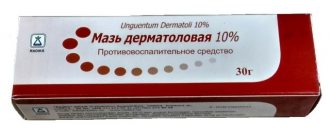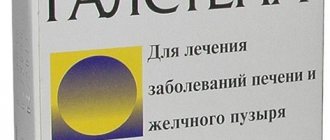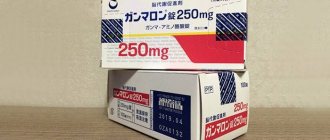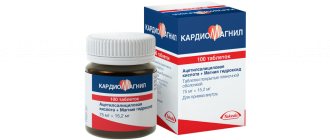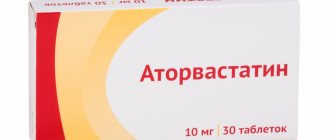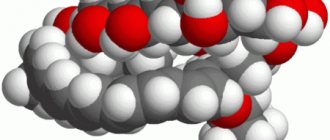- September 6, 2019
- Cardiology
- Oksana Yudina
Valsartan + Sacubitril is a combination medicine used to treat and prevent heart failure. It may have several brand names. The drug reduces the risk of being hospitalized with symptoms of heart disease, and also minimizes the risk of death from various cardiovascular pathologies.
The medication is usually prescribed in combination with other medications for high blood pressure and heart failure. Let us consider in detail the instructions for using the drug “Valsartan + Sacubitril”. The article will provide information about indications, contraindications, side effects after taking the medication, as well as the recommended dosage.
Description of the drug
It is impossible to find Sacubitril in pharmacies. This drug is not produced separately by the pharmaceutical industry. However, there are several medications that contain the substance of the same name. One of them is Valsartan/Sacubitril. Release form: tablets of 50, 100 and 200 mg. They are biconvex, without marks, but with a chamfer, covered with a film shell. For the convenience of patients, pharmacists produce tablets of different colors: 50 mg - white, 100 mg - yellowish, 200 mg - pink. However, the color of the pills may vary from manufacturer to manufacturer. The trade names of the medicine also differ. It could be Uperio, Inresto, or simply Sacubitril/Valsartan.
Compound
There are two active ingredients in the drug. These are sacubitril and valsartan. Their concentration varies, depending on the dosage. Thus, 50 mg tablets contain 25.7 mg of valsartan, and 24.3 mg of sacubitril. In tablets of a different dosage, these values are different, but the percentage of active ingredients does not change.
Sacubitril/Valsartan contains the following auxiliary components:
- magnesium stearate;
- silicon dioxide;
- crospovidone;
- hyprolose;
- talc;
- microcrystalline cellulose.
The composition of the white shell includes:
- titanium dioxide;
- hypromellose;
- macrogol;
- talc.
Colored shells contain dyes instead of titanium dioxide.
Operating principle
This medication successfully treats some types of heart failure. It can prolong a patient's life and significantly reduce his chance of ending up in the hospital due to various heart problems. As mentioned above, this medication contains 2 active ingredients: sacubitril and valsartan. The first belongs to a class of drugs called neprilysin inhibitors. As a result of suppression of its activity, natriuresis, the rate of renal blood flow and glomerular filtration increase.
The second substance suppresses the activity of angiotensin I receptors. The drug Sacubitril/Valsartan relaxes blood vessels. It also simplifies blood circulation and reduces the load on the heart.
The mechanism of action of Sacubitril/Valsartan is based on the simultaneous suppression of neutral endopeptidase activity by the active metabolite of sacubitril (substance LDQ657) and blockade of angiotensin type 1 receptors by valsartan.
Thus, the two active substances of the drug have beneficial effects on the condition of the heart, blood vessels and even kidneys in patients suffering from heart failure.
After oral administration, the drug breaks down into sacubitril and valsartan. The first substance, as a result of some reactions, is converted into the metabolite LDQ657. The bioavailability of sacubitril is 60%, and that of valsartan is 23%.
The drug is excreted by the kidneys (sacubitril - from 52 to 68%, and valsartan - up to 13%) and through the intestines (37-48% and 86%, respectively).
Uperio
Mechanism of action
The effect of Uperio is mediated by a new mechanism, namely the simultaneous suppression of the activity of neprilysin (neutral endopeptidase (NEP)) by sacubitrilate (an active metabolite of sacubitril) and blockade of receptors for angiotensin II type 1 (AT1) by valsartan, which is an antagonist of angiotensin II receptors ( APA II).
Under the influence of sacubitril, there is an increase in the amount of peptides destroyed by neprilysin (such as natriuretic peptides (NUP)), which, while simultaneously suppressing the negative effects of angiotensin II by valsartan, causes complementary beneficial effects of sacubitril and valsartan on the state of the cardiovascular system and kidneys in patients with heart failure. NUPs activate membrane-bound receptors coupled to guanylyl cyclase, which leads to increased concentrations of cyclic guanosine monophosphate (cGMP), causing symptoms of vasodilation, increased natriuresis and diuresis, increased glomerular filtration rate and renal blood flow, suppression of renin and aldosterone release, decreased sympathetic activity, as well as antihypertrophic and antifibrotic effect.
Valsartan, by selectively blocking the AT1 receptor, suppresses the negative effects of angiotensin II on the cardiovascular system and kidneys, and also blocks angiotensin II-dependent release of aldosterone. This prevents persistent activation of the renin-angiotensin-aldosterone system (RAAS), which causes vasoconstriction, sodium and water retention by the kidneys, activation of cell growth and proliferation, and subsequent maladaptive remodeling of the cardiovascular system.
Pharmacodynamics
The pharmacodynamic effects of the complex of sacubitril and valsartan, which are part of the drug, were assessed after its single and repeated use in healthy volunteers, as well as in patients with chronic heart failure. The observed effects corresponded to the mechanism of action of the complex of active substances, consisting of simultaneous inhibition of neprilysin and blockade of the RAAS.
In a 7-day study in patients with reduced left ventricular ejection fraction (EF), in which valsartan was used as a control, the use of a complex of sacubitril and valsartan led to a statistically significant short-term increase in natriuresis, an increase in urinary cGMP concentrations and a decrease in the concentration of mid-regional atrial natriuretic precursor peptide (MR-proANP) and N-terminal fragment of brain natriuretic peptide precursor (NT-proBNP) in blood plasma (compared to valsartan).
In a 21-day study in patients with reduced left ventricular EF, sacubitril and valsartan caused statistically significant increases in urinary atrial natriuretic peptide (ANP) and cGMP concentrations and plasma cGMP concentrations, as well as decreases in plasma concentrations of NT-proBNP, aldosterone, and endothelin. -1 (compared to the initial state).
In addition, the use of a complex of sacubitril and valsartan blocks the AT1 receptor, as indicated by an increase in the activity and concentration of renin in the blood plasma. In another study, a complex of sacubitril and valsartan caused a greater decrease in plasma NT-proBNP concentrations and a greater increase in urinary brain natriuretic peptide (BNP) and cGMP concentrations than enalapril. While BNP is a substrate of neprilysin, NT-proBNP is not, and therefore NT-proBNP, unlike BNP, can be used as a biomarker in monitoring patients with heart failure receiving sacubitril-valsartan complex.
In a study with a detailed study of the QTc interval in healthy male volunteers, the use of a complex of sacubitril and valsartan in single doses of 400 mg and 1200 mg had no effect on myocardial repolarization.
Neprilysin is one of several enzymes involved in the metabolism of amyloid-β (Aβ) in the brain and cerebrospinal fluid (CSF). When using a complex of sacubitril and valsartan at a dose of 400 mg 1 time per day for 2 weeks in healthy volunteers, the concentration of Aβ 1-38 in the CSF increased; however, the concentrations of Aβ 1-40 and 1-42 in the CSF did not change. The clinical significance of this fact is unknown.
In a clinical study, the use of a complex of sacubitril and valsartan in patients with chronic heart failure statistically significantly reduced the risk of death due to cardiovascular pathology or hospitalization due to heart failure (21.8% in the study drug group versus 26.5% in the enalapril group ).
The absolute reduction in the risk of death due to cardiovascular disease or hospitalization due to heart failure was 4.7% (3.1% for the risk of death due to cardiovascular disease and 2.8% for initial hospitalization due to cardiac disease). deficiency).
The relative risk reduction compared with enalapril was 20%. The effect was noted in the early stages of using the drug and persisted throughout the entire study period. Both active components of the drug contributed to the development of the effect.
The incidence of sudden death, which accounted for 45% of all deaths due to cardiovascular pathology, decreased by 20% in the study drug group compared with the enalapril group (hazard ratio (HR) 0.80, p = 0.0082 ). The incidence of myocardial contractile dysfunction, which was the cause of death in 26% of cases due to cardiovascular pathology, in the study drug group decreased by 21% compared to that in the enalapril group (HR 0.79, p = 0, 0338).
The antihypertensive effect of Uperio was evaluated in two randomized, double-blind, active-controlled, 8-week studies evaluating the efficacy and safety of Uperio compared with olmesartan (CLCZ696A2315 and CLCZ696A1306) in more than 2500 adult patients, of which more than 1700 patients received Uperio. Both studies demonstrated not only comparable, but superior efficacy in reducing mean sitting systolic blood pressure (mSBP) at both doses of Uperio 200 mg once daily (2.3 and 5.0 mmHg in each study, respectively) and Uperio 400 mg once daily (3.5 and 7.0 mmHg) compared with olmesartan 20 mg once daily. Similar results were observed for mean diastolic blood pressure.
Contraindications
It is strictly forbidden to use the medication if you have an allergic reaction to any substance included in its composition, as well as in cases where allergic manifestations have been noted in the past after taking medications to lower blood pressure, such as Quinapril, Ramipril, Trandolapril ", "Captopril", "Enalapril", "Fosinopril", "Lisinopril", "Moexipril", "Perindopril", "Lotensin", "Vazotek", "Prinivil", "Accupril", "Mavic".
If heart disease is accompanied by diabetes, you should not use the drug together with medications that contain the substance aliskiren.
It is also necessary to take into account other nuances.
The contraindications for taking Valsartan/Sacubitril are as follows:
- History of angioedema.
- Billiary cirrhosis.
- Cholestasis.
- Liver failure (class C, according to the Child Pugh classification).
- Treatment with other ACEIs or a period of up to 36 hours after their discontinuation.
- Taking other medications that contain valsartan or sacubitril.
- Pregnancy.
- Lactation period.
- Age up to 18 years.
They are all absolute. There are also relative contraindications to taking the drug Sacubitril/Valsartan. If the patient has them, the medication must be taken with great caution. Relative contraindications:
- renal failure;
- those undergoing hemodialysis;
- bilateral renal artery stenosis;
- during a low-salt diet;
- simultaneous use of drugs that increase the amount of potassium in the blood;
- simultaneous use of medications with beds.
The patient's advanced age is not a contraindication to taking drugs with sacubitril. But such patients need to be regularly examined to determine the effect of the medication on liver and kidney function, as well as blood pressure measurements.
Uperio Tablets, box, 56 pcs, 200 mg, for oral administration, film-coated
Interaction with other drugs
Contraindicated drug interactions ACE inhibitors Uperio is contraindicated for use simultaneously with ACE inhibitors, since suppression of neprilysin simultaneously with the use of an ACE inhibitor may increase the risk of developing angioedema.
The use of the drug Uperio is possible no earlier than 36 hours after discontinuation of the ACE inhibitor. The use of an ACE inhibitor is possible no earlier than 36 hours after the last dose of Uperio.
Aliskiren
In patients with diabetes mellitus and in patients with impaired renal function (eGFR
Not recommended drug interactions
Angiotensin receptor antagonists
Since one of the active ingredients of the drug is an angiotensin II receptor antagonist, simultaneous use with another drug containing ARA II is not recommended.
Drug interactions to consider
HMG-CoA reductase inhibitors (statins)
Research data show that sacubitril inhibits the activity of the OATP1B1 and OATP1B3 transporters. Uperio may increase the systemic exposure of OATP1B1 and OATP1B3 substrates such as statins. In patients receiving Uperio simultaneously with atorvastatin, the maximum plasma concentration (Cmax) of atorvastatin and its metabolites increased up to 2 times, and AUC increased up to 1.3 times. For this reason, Uperio should be used concomitantly with statins with caution.
Sildenafil
In patients with a marked increase in blood pressure receiving Uperio (until equilibrium concentrations were reached), a single dose of sildenafil enhanced the antihypertensive effect compared with the use of Uperio in monotherapy. For this reason, sildenafil or another phosphodiesterase type 5 inhibitor should be used with caution in patients receiving Uperio.
Suspected drug interactions to consider
Potassium
Concomitant use of potassium-sparing diuretics (for example, triamterene and amiloride), mineralocorticoid antagonists (for example, spironolactone and eplerenone), potassium supplements or potassium-containing salt substitutes may cause an increase in potassium and creatinine concentrations in the blood serum. In patients receiving Uperio concomitantly with these drugs, it is recommended to regularly monitor serum potassium levels.
Nonsteroidal anti-inflammatory drugs (NSAIDs), including selective cyclooxygenase-2 inhibitors (COX-2 inhibitors)
The use of Uperio concomitantly with NSAIDs in patients over the age of 65 years, in patients with hypovolemia (including patients receiving diuretics) and in patients with impaired renal function may increase the risk of deterioration of renal function. In patients receiving Uperio concomitantly with NSAIDs, it is recommended to monitor renal function when prescribing such a treatment regimen and in case of changes in it.
Lithium preparations
The possibility of drug interactions between Uperio and lithium preparations has not been studied. With the simultaneous use of lithium preparations with ACE inhibitors and ARA II, a reversible increase in the concentration of lithium in the blood serum was observed and, in connection with this, an increase in toxic manifestations. In patients receiving Uperio together with lithium preparations, it is recommended to carefully monitor the lithium content in the blood serum. If a diuretic drug is used additionally, the risk of lithium toxicity may increase.
Transport proteins
The active metabolite of sacubitril (LBQ657) and valsartan are substrates of the transporter proteins 0ATP1B1, 0ATP1B3 and OATZ; valsartan is also a substrate of the MRP2 transporter protein. In patients receiving Uperio concomitantly with OATP1B1, OATP1B3, OATZ (e.g., rifampicin and cyclosporine), or MRP2 (e.g., ritonavir) inhibitors, systemic exposure to LBQ657 or valsartan, respectively, may be increased. Caution must be exercised at the beginning and at the time of completion of the combined use of the drug Uperio and this group of drugs.
No significant drug interactions
When Uperio was used in combination with furosemide, digoxin, warfarin, hydrochlorothiazide, amlodipine, metformin, omeprazole, carvedilol, intravenous (IV) nitroglycerin or a combination drug of levonorgestrel and ethinyl estradiol, no clinically significant interactions were identified.
Interactions with atenolol, indomethacin, glibenclamide (glyburide) or cimetidine are not expected when used together with Uperio.
Interactions with isoenzymes of the cytochrome P450 system
Available studies demonstrate that the likelihood of drug interactions mediated by cytochrome CYP450 isoenzymes is low, since the complex of active substances is metabolized to a small extent with the participation of CYP450 isoenzymes. The complex of active ingredients of the drug Uperio is not an inhibitor or inducer of CYP450 isoenzymes.
Dosage
The instructions for use of Sacubitril/Valsartan indicate that the drug should be started with a minimum dose of 50 mg twice a day. If the patient responds well to the drug, the dosage can be gradually increased.
After 2-4 weeks, the amount of medication taken per day can be doubled (up to 100 mg) in the morning and evening. In case of complaints about tolerability (systolic blood pressure 95 mmHg, symptomatic hypotension, hyperkalemia, renal dysfunction), adaptation to concomitant medications, a temporary dose reduction or discontinuation of the drug is recommended.
Patients with serum potassium levels >5.4 mmol/L or systolic blood pressure below 100 mm Hg. Art. treatment is contraindicated.
The initial dosage of Sacubitril/Valsartan 24 mg/26 mg twice daily should be prescribed to patients with a systolic blood pressure of 100-110 mmHg. Art.
The drug should not be co-administered with an ACE inhibitor or angiotensin-converting enzyme inhibitor (due to the possible risk of angioedema when used concomitantly with an ACE inhibitor). Treatment with the drug is permitted no earlier than 36 hours after complete cessation of therapy with ACE inhibitors.
If one dose is missed, the patient must adjust the use of the medication so that he takes the required dose per day.
In case of mild liver failure, no adjustment of the initial dose is required. The use of the drug in patients with significant liver problems is not recommended, but is not prohibited. To reduce the risk of side effects, your doctor may prescribe the medicine at a low dose and increase the dose gradually.
The maximum dose of medication should not exceed 400 mg (200 mg twice a day).
Instructions for use UPERIO™ (UPERIO)
Mechanism of action
Uperio™ demonstrates the mechanism of action of a neprilysin receptor antagonist inhibitor through the simultaneous inhibition of neprilysin (neutral endopeptidase; NEP) via LBQ657, the active metabolite of sacubitril, and blockade of angiotensin II type 1 (AT1) receptors by valsartan.
The additional beneficial cardiovascular effect of Uperio™ in patients with heart failure is due to the fact that LBQ657 activates peptides that are broken down by neprilysin, in particular natriuretic peptides (NPs), while valsartan inhibits the negative effects of angiotensin II. NPs exert their effect by activating membrane-bound receptors coupled to guanyl cyclase, which leads to an increase in the concentration of cyclic guanosine monophosphate (cGMP), causing symptoms of vasodilation, an increase in natriuresis and diuresis, an increase in GFR and renal blood flow, suppression of the release of renin and aldosterone, a decrease in sympathetic activity, and also antihypertrophic and antifibrotic effects.
Valsartan, by selectively blocking AT1 receptors, suppresses the negative effects of angiotensin II on the cardiovascular system and kidneys, and also blocks angiotensin II-dependent release of aldosterone. This prevents persistent activation of the RAAS, which causes vasoconstriction, sodium and water retention by the kidneys, activation of cell growth and proliferation, as well as subsequent restructuring of the cardiovascular system, aggravating disturbances in its functioning.
Pharmacodynamics
The pharmacodynamic effects of sacubitril and valsartan, which are part of the drug, were assessed after its single and repeated use in healthy volunteers, as well as in patients with chronic heart failure. The observed effects corresponded to the mechanism of action of the complex of active substances, consisting of simultaneous suppression of neprilysin and blockade of the RAAS. In a seven-day study in patients with reduced left ventricular ejection fraction, in which valsartan was used as a control, the use of sacubitril and valsartan resulted in a statistically significant short-term increase in natriuresis, an increase in urinary cGMP concentrations, and a decrease in atrial natriuretic peptide (MR-proANP) and N concentrations. -terminal fragment of the precursor of brain natriuretic peptide (NT-proBNP) in blood plasma (compared to valsartan). In a 21-day study in patients with reduced left ventricular ejection fraction, the use of sacubitril and valsartan caused a statistically significant increase in the concentrations of atrial natriuretic peptide (ANP) and cGMP in urine and plasma cGMP concentrations, as well as a decrease in plasma concentrations of NT-proBNP, aldosterone and endothelin-1 (compared to the initial state). In addition, the use of sacubitril and valsartan blocks AT1 receptors, as indicated by an increase in the activity and concentration of renin in the blood plasma. In the PARADIGM-HF study, sacubitril and valsartan caused a greater decrease in plasma NT-proBNP concentrations and a greater increase in urinary brain natriuretic peptide (BNP) and cGMP concentrations than enalapril. While BNP is a substrate of neprilysin, NT-proBNP is not, and therefore NT-proBNP, unlike BNP, can be used as a biomarker in monitoring patients with heart failure receiving sacubitril-valsartan complex.
In a study examining the QTc interval in detail in healthy male volunteers, single doses of Uperio™ 194 mg sacubitril/206 mg valsartan and 583 mg sacubitril/617 mg valsartan had no effect on cardiac repolarization.
Neprilysin is one of several enzymes involved in the metabolism of amyloid-β (Aβ) in the brain and cerebrospinal fluid. When using the drug Uperio™ at a dose of 194 mg sacubitril/206 mg valsartan 1 time/day for 2 weeks in healthy volunteers, the concentration of Aβ 1-38 in the cerebrospinal fluid increased; however, the concentration of Aβ 1-40 and 1-42 in the cerebrospinal fluid did not change. The clinical significance of this fact is unknown.
The use of a complex of sacubitril and valsartan in patients with chronic heart failure statistically significantly reduces the incidence of cardiovascular mortality and hospitalization for heart failure compared with enalapril.
Clinical researches
Dosages of 24 mg/26 mg, 49 mg/51 mg, and 97 mg/103 mg are listed as 50 mg, 100 mg, or 200 mg, respectively.
PARADIGM-HF was a multinational, randomized, double-blind study of 8442 patients comparing Uperio™ with enalapril in adult patients with chronic heart failure (NYHA class II-IV) and reduced ejection fraction (LVEF ≤40%, later adjusted to ≤35%) in addition to other drugs prescribed for heart failure. The primary endpoint was a composite of death due to cardiovascular disease or hospitalization due to heart failure. Patients with SBP <100 mmHg, severe renal impairment (eGFR <30 ml/min/1.73 m2) and severe liver dysfunction were excluded from screening and, as a result, were not included in the prospective study.
Before enrollment, patients were treated with standard therapies, which included ACE inhibitors/angiotensin II receptor antagonists (>99%), beta blockers (94%), mineralocorticoid antagonists (58%), and diuretics (82%). The average follow-up period was 27 months, patients received therapy for up to 4.3 years.
Patients were required to discontinue treatment with ACE inhibitors or angiotensin II receptor antagonists, after which they entered a sequential single-blind run-in period and received enalapril 10 mg twice daily, followed by single-blind therapy with Uperio™ 100 mg twice daily. increasing to 200 mg 2 times/day. They were then randomized to participate in a double-blind study period in which they received either Uperio™ 200 mg or enalapril 10 mg twice daily (Uperio™ (n=4209); enalapril (n=4233) ).
The mean age of the study population was 64 years, with 19% aged 75 years or older. At the time of randomization, 70% of patients had NYHA FC II, 24% of patients had FC III, and 0.7% had FC IV. The mean LVEF was 29%, with 963 (11.4%) patients having a baseline LVEF >35% and ≤40%.
In the Uperio™ group, 76% of patients remained on the target dose of 200 mg 2 times / day at the end of the study (average daily dose - 375 mg). In the enalapril group, 75% of patients remained on the target dose of 10 mg 2 times / day by the end of the study (average daily dose - 18.9 mg).
Uperio™, compared with enalapril, statistically significantly reduced the risk of death due to cardiovascular pathology or hospitalization due to heart failure (21.8% in the study drug group versus 26.5% in the enalapril group). The absolute reduction in the risk of death due to cardiovascular disease or hospitalization due to heart failure was 4.7% (3.1% for the risk of death due to cardiovascular disease and 2.8% for initial hospitalization due to heart failure). The relative risk reduction compared with enalapril was 20%. The effect was noted in the early stages of using the drug and persisted throughout the entire study period. Both active components of the drug contributed to the development of the effect. The incidence of sudden death, which accounted for 45% of all deaths due to cardiovascular disease, was reduced by 20% in the study drug group compared with the enalapril group (hazard ratio (HR) 0.80, p=0.0082). The incidence of cardiac contractility failure, which was the cause of death in 26% of cases due to cardiovascular pathology, in the study drug group decreased by 21% compared to that in the enalapril group (HR 0.79, p = 0.0338).
This risk reduction was consistently observed in the following subgroups, including:
- sex, age, race, residence, NYHA class (II/III), ejection fraction, renal function, history of diabetes mellitus or hypertension, therapy for heart failure, and atrial fibrillation.
Uperio™ increased survival with a significant reduction in overall mortality by 2.8% (Uperio™ - 17%, enalapril - 19.8%). The relative risk reduction was 16% compared with enalapril.
special instructions
You must follow everything written in the prescription issued by your doctor. It is also necessary to read the instructions for use of Sacubitril/Valsartan. Be prepared to monitor your blood pressure. The kidneys should also be checked periodically. The required daily dosage of Sacubitril/Valsartan can be changed by the doctor if he considers this acceptable in a particular situation. Under no circumstances should you take the medicine outside of the instructions or doctor's instructions. This can cause severe and irreversible consequences.
If your health worsens after starting therapy, you should definitely consult your doctor. Depending on the symptoms that appear, as well as on what kind of heart disease is diagnosed in the patient, the doctor may consider several treatment options:
- o and prescribe other medications;
- reduce the dose to the minimum, and after the body gets used to it, gradually increase it again to normal.
Take Sacubitril/Valsartan orally. The effect of the drug does not depend on whether the medicine is taken with, before or after food.
Introduction
Approximately 1–2% of the adult population in developed countries have heart failure (HF), and in patients over the age of 70 years, the risk of developing HF is more than 10% [1–4]. Among people over 65 years of age with new-onset dyspnea on exertion, 1 in 6 people will have unrecognized HF, mostly HF with preserved ejection fraction (EF) [3, 4]. The risk of developing heart failure at age 55 years is 33% for men and 28% for women [5].
Over the past 25 years, since enalapril has been shown to reduce mortality in patients with HF with reduced EF while taking enalapril, inhibitors of the renin-angiotensin-aldosterone system (RAAS) have been the mainstay of treatment for HF. Subsequent studies found that triple neurohormonal blockade: angiotensin-converting enzyme inhibitors (ACEIs), beta-blockers and mineralocorticoid receptor antagonists reduced the risk of death from 30-35 to 22-30%.
In 2021, a new drug appeared in the arsenal of cardiologists - sacubitril/valsartan (Uperio), which is a complex of neprilysin inhibitor and angiotensin-2 receptor blocker. Neprilysin is a membrane enzyme involved in the degradation mainly of natriuretic peptides [1–3]. Inhibition of neprilysin, in turn, causes an increase in the level of these peptides, which counteracts maladaptive neurohormonal activation, which contributes to sodium and water retention in the body, maintaining vasoconstriction and tissue remodeling [6, 7]. Simultaneous inhibition of the RAAS and neprilysin allows one to achieve an optimal level of neurohormonal balance, stabilize and improve the clinical condition of patients with HF with systolic dysfunction, as was demonstrated in the prospective randomized clinical trial PARADIGM-HF.
According to modern recommendations for the diagnosis, prevention and treatment of HF, sacubitril/valsartan is recommended for patients with chronic HF (CHF) functional class II-III with systolic dysfunction, who do not require intravenous or doubling the dose of oral diuretics, and with systolic blood pressure (BP) more than 100 mmHg, if ACE inhibitors or angiotensin receptor antagonists are tolerated, to further reduce the risk of death and subsequent hospitalizations due to worsening CHF (class of recommendation I, level of evidence B) [8].
Negative reactions after use
After taking Valsartan/Sacubitril, side effects are not observed in all patients. Their occurrence depends on the individual characteristics of the organism.
The most frequently noted:
- nagging pain in the abdominal area or stomach;
- vision problems;
- labored breathing;
- dizziness;
- weakness;
- irregular heartbeat;
- nausea or even vomiting;
- nervousness;
- tingling sensation, numbness in arms, legs, or lips;
- sweating;
- fast fatiguability;
- weakness or heaviness in the legs;
Less common:
- bloody urine;
- decreased frequency of urination or amount of urine;
- increased thirst;
- loss of appetite;
- pain in the lower back or side;
- swelling of the face, fingers, or legs;
- weight gain.
In rare cases, patients report swelling on the face, throat, arms, legs, feet, or genitals.
During pregnancy and lactation
Studies of the drug have shown that the evidence for a risk of teratogenicity following exposure to ACEIs during early pregnancy is inconclusive. However, a slight increase in risk cannot be excluded. If continuation of ARB therapy is not considered necessary, in patients planning pregnancy, treatment should be adjusted and alternative antihypertensive methods should be selected that have an established safety profile for use in pregnant women.
If pregnancy is detected, ARB use should be stopped and another treatment option should be started. It has been proven that the use of ARB in the 2nd and 3rd trimesters provokes fetotoxicity in the fetus (decreased kidney function, oligohydramniosis, delayed ossification of the skull).
Infants whose mothers had cardiac problems and were taking ARBs should be carefully monitored for hypotension.
It is unknown whether the drug is excreted in human milk, as relevant studies have not been conducted. Due to the potential risk of irreversible physiological changes in infants, it is not recommended to take Sacubitril during breastfeeding. A decision must be made about what is more important, taking the drug or breastfeeding. If it is necessary to continue treatment, the baby is transferred to artificial formula.
Overdose
According to the information in the instructions for use of Sacubitril/Valsartan, an overdose is extremely rare. In studies, healthy volunteers took a single dose of 1200 mg or multiple doses of 900 mg. They did not experience any serious health problems.
The most noticeable symptom of overdose was a decrease in blood pressure. In such cases, symptomatic treatment is recommended.
If a sick person accidentally takes several tablets of the drug at once, induce vomiting and perform gastric lavage.
If the decrease in blood pressure is pronounced, a solution of sodium chloride (0.9%) should be administered intravenously. The patient should be placed on a hard surface so that the legs are higher than the head. Doctors should regularly monitor the functioning of the heart and lungs, as well as the volume of circulating blood and the amount of urine excreted.
Clinical case
Patient B.
, 62 years old, was hospitalized from 08/29/18 to 09/09/18. She was admitted through emergency medical care with decompensated CHF. Upon admission, she complained of shortness of breath at rest, a feeling of lack of air, severe swelling of the lower extremities, general weakness, and pain in the lower extremities.
From the anamnesis it is known that the patient has been suffering from hypertension for a long time with maximum blood pressure values of 200/110 mm Hg, the usual blood pressure figures are 120-130/90 mm Hg. On an outpatient basis I took daily: bisoprolol 5 mg, losartan 50 mg, furosemide 20 mg, clopidogrel 75 mg, aspirin 100 mg. The patient had a history of myocardial infarction (of unknown duration) and a long-term persistent form of atrial fibrillation. I have type 2 diabetes mellitus, insulin dependent. Denies any history of cerebrovascular accident. About 2 years ago, atherosclerosis of peripheral arteries and occlusion of the arteries of the lower extremities were detected. She was repeatedly hospitalized due to S.N.’s decompensation. The condition worsened over the course of a week, when the above complaints began to increase.
The condition at admission was of moderate severity. The patient is conscious, the position is forced - orthopnea. The physique is normosthenic, body weight 60 kg, height 155 cm, BMI 25 kg/m2. The skin and mucous membranes are pale in color and clean. Symmetrical pronounced dense swelling of the legs and feet. The right lower limb is cold to the touch. Trophic ulcers of the right leg. In the lungs, breathing is harsh, fine wheezing on both sides, breathing is not audible in the lower sections. Heart sounds are muffled, irregular, there is no noise. Heart rate (HR) 117 beats/min, blood pressure 120/78 mm Hg. The abdomen is not enlarged, soft, painless. Stool and diuresis are not disturbed.
Data from clinical tests upon admission: hemoglobin 100 g/l, leukocytes 11.5·109/l; ESR 40 mm/h, neutrophils 9.4%. General urine test - without significant pathology, biochemical blood test: creatinine 203.66 mmol/l, urea 17.8, glucose 11.5 mmol/l, AST 33 U/l, ALT 60 U/l, potassium 5.6 mmol /l, sodium 137 mmol/l, natriuretic peptide BNP 3568 pg/ml, cholesterol 3.5 mmol/l. LDL 2.1 mmol/l, HDL 0.56 mmol/l.
Instrumental research data: electrocardiography (ECG) dated 08/29/18 - atrial fibrillation rhythm, heart rate 117 beats/min. The electrical axis of the heart is deviated to the left.
On the chest x-ray dated 08/30/18: bilateral hydrothorax.
Echocardiographic examination of the heart (EchoCG) dated 08/30/18
— aorta: sinus of Valsalva 3.5 cm. Left atrium 4.5×5.0×5.5 cm (4.0×4.0×6.0 cm), interventricular septum 1.0 cm (0.7— 1.1 cm); posterior wall of the left ventricle 0.9 cm (0.7-1.1 cm), end-systolic size 4.4 cm (2.5-4.1 cm), end-diastolic size 5.5 cm (3.5-5 .6 cm). The contractility of the left ventricular (LV) myocardium is diffusely reduced. Pronounced hypokinesia of the septum, anterior wall, akinesia of the apex. LVEF 40%, right atrium 5.0×5.0 cm (4.4×6.0 cm), right ventricle 2.5×4.0 cm (3.0×4.3 cm), additional formations: parietal thrombus 3.0×1.5 cm in the apex of the left vein. Contractility of the right ventricle is not impaired. The aortic valve is tricuspid, the leaflets are thickened, the leaflets are fully opened, the maximum pressure gradient is 3 mm Hg, degree I regurgitation. Mitral valve - multidirectional movement, regurgitation of the second degree. The tricuspid valve is not changed, regurgitation of II-III degree. The average pressure in the pulmonary artery is 50 mm Hg. There is 1.0 cm of fluid in the pericardial cavity. Bilateral hydrothorax.
Clinical diagnosis made:
Basic:
IHD. Post-infarction cardiosclerosis. Atherosclerosis of the aorta and coronary arteries. Atherosclerosis of the arteries of the lower extremities. Chronic arterial insufficiency of the 4th degree according to Fontaine-Pokrovsky. Occlusion of the tibial arteries on the right. Trophic ulcers of the right leg, I, II toes of the right foot. Forming gangrene of the right leg and foot.
Background disease:
stage III hypertension, stage 3 arterial hypertension, the risk of cardiovascular complications is very high.
Complication:
NK 2B, 3rd functional class according to NYHA. Chronic kidney disease - C4 (glomerular filtration rate - GFR - according to CKD-EPI 22 ml/min). Bilateral hydrothorax. Hydropericardium. Permanent form of atrial fibrillation. The risk of thromboembolic complications according to the CHADS2VASC scale is 6 points. The risk of bleeding on the HASBLED scale is 3 points.
Related:
diabetes mellitus type 2, insulin-requiring. Duodenal ulcer, without exacerbation. Chronic mixed gastritis.
Treatment in hospital: due to the presence of tachyform atrial fibrillation, the dose of bisoprolol was increased to 7.5 mg/day; For the first few days, intravenous furosemide was prescribed at a dose of 40 mg/day, followed by a transition to oral torsemide 10 mg/day. There was no significant decrease in creatinine levels after the administration of intravenous furosemide; creatinine clearance according to CKD-EPI was 24 ml/min (creatinine from 08/01/19 - 190 mlmol/l). After transferring the patient to an oral diuretic, it became possible to prescribe the drug sacubitril/valsartan (Uperio) 100 mg/day. Antiplatelet therapy was carried out with rivaroxaban 15 mg/day and clopidogrel 75 mg/day. The patient also received omeprazole 40 mg/day for gastroprotection and amoxiclav 3 g/day due to the presence of trophic ulcers.
After 7 days of therapy
Complaints of general weakness persist, shortness of breath at rest does not bother him, pain in the legs, mainly at night.
Objective status:
the condition is relatively satisfactory. The patient is conscious and moves around within the ward. The skin and mucous membranes are pale in color and clean. Edema of the lower extremities has regressed, some pastiness remains. Breathing in the lungs is harsh, somewhat weakened in the lower sections. Heart sounds are muffled, irregular, there is no noise. Heart rate 80 beats/min. Blood pressure 110/70 mm Hg. The abdomen is not enlarged, soft, painless. Stool and diuresis are not disturbed.
Laboratory tests indicate a decrease in creatinine to 120 mmol/l, urea 15.0, natriuretic peptide BNP 2000.2 pg/ml, glucose 10 mmol/l, potassium 4.9 mmol/l, ALT 9 mmol/l, AST 25 mmol/l.
Instrumental studies: ECG dated 09/05/18 - atrial fibrillation, heart rate 80 beats/min. On a repeat X-ray of the chest organs dated 09/07/18: positive dynamics of stagnant changes. Positive dynamics on EchoCG: improvement in LV myocardial contractility, increase in EF up to 50%, decrease in pressure in the pulmonary artery, resolution of hydropericardium and hydrothorax on the left.
Due to the stabilization of the patient’s condition and a decrease in creatinine levels during treatment, it became possible to conduct angiography of the vessels of the lower extremities. The patient was transferred to the surgery department, where recanalization, balloon angioplasty and stenting of the right superficial femoral artery were performed, Abbott SUPERA 5.0×200 mm stents were implanted distally, Abbott SUPERA 6.0×150 mm proximally. After the operation, the patient noted a decrease in pain.
Interaction with other drugs
The instructions for use of Sacubitril/Valsartan indicate that the drug should not be taken simultaneously with the following medications:
- Other ACE inhibitors. This may increase the occurrence of angioedema. The use of the medication in question is allowed only 36 hours after discontinuation of previous ACEs.
- "Aliskirin". This medicine should not be taken together with the described drug by persons suffering from kidney dysfunction and diabetes mellitus.
- Angiotensin receptor antagonists. This prohibition is due to the fact that Sacubitril + Valsartan is also an angiotensin receptor antagonist.
It is necessary to take into account the use of such medications simultaneously with the drug in question:
- Stalines (reductase inhibitors). Studies have shown that the substance sacubitril can increase the exposure of stanines.
- "Sildenafil". In patients with high blood pressure, simultaneous use of Sacubitril and Sildenafil increased the antihypertensive effect.
- Preparations containing potassium. The simultaneous use of such drugs (for example, Amiloride) and Sacubitril causes an increase in potassium in the blood, and in the serum - an increase in creatinine concentration.
- Nonsteroidal anti-inflammatory drugs (NSAIDs), cyclooxygenase-2 inhibitors. The use of these drugs simultaneously with Sacubitril in patients over 65 years of age or who are hypovolemic, taking diuretics, or have renal failure can increase their renal dysfunction. If such patients are prescribed Sacubitril + Valsartan, they should regularly monitor their kidney function.
- Lithium preparations. In patients taking these medications and Sacubitril at the same time, an increase in lithium in the blood was observed, which caused symptoms of intoxication.
- Transport proteins. Since sacubitril and valsartan are substrates of carrier proteins, simultaneous use of several of these drugs may increase their systemic exposure.
There were no significant effects on the patient’s health from the interaction of the medication discussed in the article with the following drugs:
- Furosemide, Digoxin, Warfarin, Amlodipine, Omeprazole, Hydrochlorothiazide, Metformin, Carvedopol, Nitroglycerin (for intravenous administration).
- With combination drugs "Ethinyl estradiol", "Levonorgestrel".
No interactions are expected when taking the drug in question simultaneously with medications:
- "Atenopol";
- "Indamethacin";
- "Glyburide";
- "Cimetidine";
- "Glibenclamide".
The likelihood of Sacubitril interacting with isoenzymes of the cytochrome P450 system is very low.
Uperio, 50 mg (25.7 mg+24.3 mg), film-coated tablets, 28 pcs.
Contraindicated drug interactions ACE inhibitors Uperio is contraindicated for use simultaneously with ACE inhibitors, since suppression of neprilysin simultaneously with the use of an ACE inhibitor may increase the risk of developing angioedema.
The use of the drug Uperio is possible no earlier than 36 hours after discontinuation of the ACE inhibitor. The use of an ACE inhibitor is possible no earlier than 36 hours after the last dose of Uperio.
Aliskiren
In patients with diabetes mellitus and in patients with impaired renal function (eGFR
Not recommended drug interactions
Angiotensin receptor antagonists
Since one of the active ingredients of the drug is an angiotensin II receptor antagonist, simultaneous use with another drug containing ARA II is not recommended.
Drug interactions to consider
HMG-CoA reductase inhibitors (statins)
Research data show that sacubitril inhibits the activity of the OATP1B1 and OATP1B3 transporters. Uperio may increase the systemic exposure of OATP1B1 and OATP1B3 substrates such as statins. In patients receiving Uperio simultaneously with atorvastatin, the maximum plasma concentration (Cmax) of atorvastatin and its metabolites increased up to 2 times, and AUC increased up to 1.3 times. For this reason, Uperio should be used concomitantly with statins with caution.
Sildenafil
In patients with a marked increase in blood pressure receiving Uperio (until equilibrium concentrations were reached), a single dose of sildenafil enhanced the antihypertensive effect compared with the use of Uperio in monotherapy. For this reason, sildenafil or another phosphodiesterase type 5 inhibitor should be used with caution in patients receiving Uperio.
Suspected drug interactions to consider
Potassium
Concomitant use of potassium-sparing diuretics (for example, triamterene and amiloride), mineralocorticoid antagonists (for example, spironolactone and eplerenone), potassium supplements or potassium-containing salt substitutes may cause an increase in potassium and creatinine concentrations in the blood serum. In patients receiving Uperio concomitantly with these drugs, it is recommended to regularly monitor serum potassium levels.
Nonsteroidal anti-inflammatory drugs (NSAIDs), including selective cyclooxygenase-2 inhibitors (COX-2 inhibitors)
The use of Uperio concomitantly with NSAIDs in patients over the age of 65 years, in patients with hypovolemia (including patients receiving diuretics) and in patients with impaired renal function may increase the risk of deterioration of renal function. In patients receiving Uperio concomitantly with NSAIDs, it is recommended to monitor renal function when prescribing such a treatment regimen and in case of changes in it.
Lithium preparations
The possibility of drug interactions between Uperio and lithium preparations has not been studied. With the simultaneous use of lithium preparations with ACE inhibitors and ARA II, a reversible increase in the concentration of lithium in the blood serum was observed and, in connection with this, an increase in toxic manifestations. In patients receiving Uperio together with lithium preparations, it is recommended to carefully monitor the lithium content in the blood serum. If a diuretic drug is used additionally, the risk of lithium toxicity may increase.
Transport proteins
The active metabolite of sacubitril (LBQ657) and valsartan are substrates of the transporter proteins 0ATP1B1, 0ATP1B3 and OATZ; valsartan is also a substrate of the MRP2 transporter protein. In patients receiving Uperio concomitantly with OATP1B1, OATP1B3, OATZ (e.g., rifampicin and cyclosporine), or MRP2 (e.g., ritonavir) inhibitors, systemic exposure to LBQ657 or valsartan, respectively, may be increased. Caution must be exercised at the beginning and at the time of completion of the combined use of the drug Uperio and this group of drugs.
No significant drug interactions
When Uperio was used in combination with furosemide, digoxin, warfarin, hydrochlorothiazide, amlodipine, metformin, omeprazole, carvedilol, intravenous (IV) nitroglycerin or a combination drug of levonorgestrel and ethinyl estradiol, no clinically significant interactions were identified.
Interactions with atenolol, indomethacin, glibenclamide (glyburide) or cimetidine are not expected when used together with Uperio.
Interactions with isoenzymes of the cytochrome P450 system
Available studies demonstrate that the likelihood of drug interactions mediated by cytochrome CYP450 isoenzymes is low, since the complex of active substances is metabolized to a small extent with the participation of CYP450 isoenzymes. The complex of active ingredients of the drug Uperio is not an inhibitor or inducer of CYP450 isoenzymes.
Driving vehicles, drinking alcohol
There is no data on the effect of the drug Sacubitril + Valsartan on the ability to drive vehicles. Experts predict that short-term dizziness and clouding of consciousness may occur. Therefore, driving vehicles during treatment with the drug in question is not recommended. Also, during this period you should not work with any mechanisms or perform actions that require increased attention.
Drinking any drinks containing alcohol during the course of therapy with Sacubitril/Valsartan is strictly prohibited.
Analogs
There are no analogues of Sacubitril/Valsartan as such. There are medications that have the same composition, but are produced by other manufacturers and under a different name. One of them is “Uperio”. The drug is produced in Italy and Switzerland. It also contains the substances valsartan and sacubitril. The mechanism of action is the same as that of the drug discussed in the article. Available in blisters (14 tablets in one). The package may contain 2 or 4 blisters.
Another medicine is called "Inresto". It also contains two main components - valsartan and sacubitril. All the features of this drug and those discussed in the article are identical. Available in blisters (14 tablets each) or in plastic containers (60 tablets each).
Discussion
One subanalysis of the PARADIGM-HF study assessed the effect of sacubitril/valsartan (Uperio) therapy on measures of renal function in patients with HF, particularly creatinine clearance and urinary albumin-to-creatinine ratio. Compared with enalapril, sacubitril/valsartan was found to slow the rate of decline in GFR and have beneficial effects on both cardiovascular and renal outcomes [9]. A slower decline in GFR was observed in a wide range of patients regardless of blood pressure levels, low levels of which are known to worsen kidney function.
Similar nephroprotective effects of sacubitril/valsartan (Uperio) were previously noted in the small 36-week PARAMAUNT-HF trial in patients with preserved EF, in which sacubitril/valsartan (Uperio) also delayed the decline in GFR compared with valsartan [10].
The exact mechanism of preservation of renal function when taking sacubitril/valsartan (Uperio) is unknown, and is currently interpreted as a consequence of restoration of normal perfusion of renal tissue against the background of improved neurohormonal balance due to the protective effect of natriuretic peptides.
Additional Information
The shelf life of the medicine "Sacubitril and Valsartan" is 30 months, provided that it is kept in a room with an air temperature of +25 degrees Celsius. The drug should be kept in a dark, dry place, away from exposure to intense sunlight and moisture. You should not store the medication in the bathroom, as high humidity can negatively affect its medicinal properties.
It is necessary to keep the drug away from pets and minor children. It is not recommended to flush the medicine down the toilet or drain. It is prohibited to use the medication after its expiration date. Sacubitril + Valsartan is available only with a doctor's prescription.

